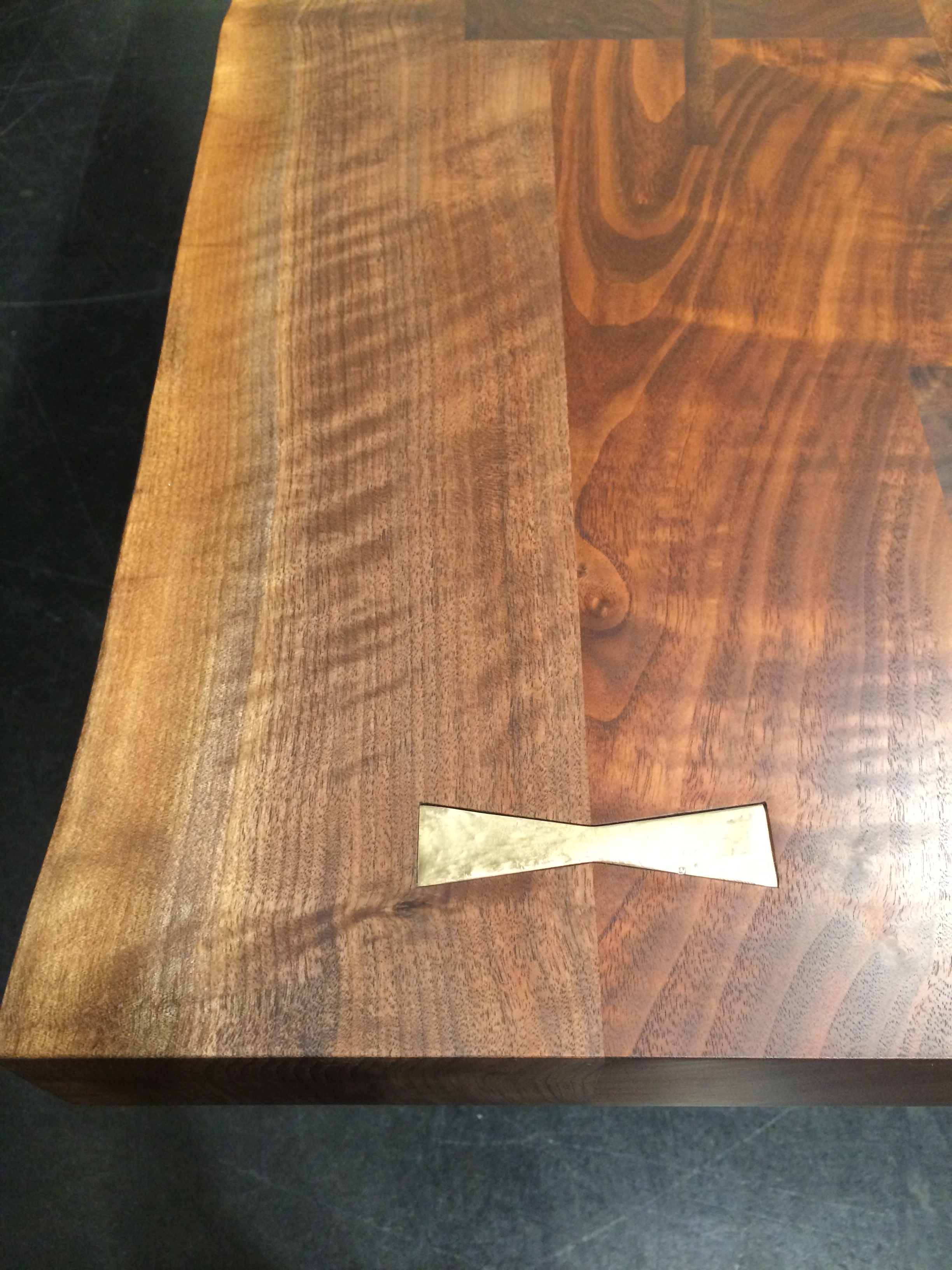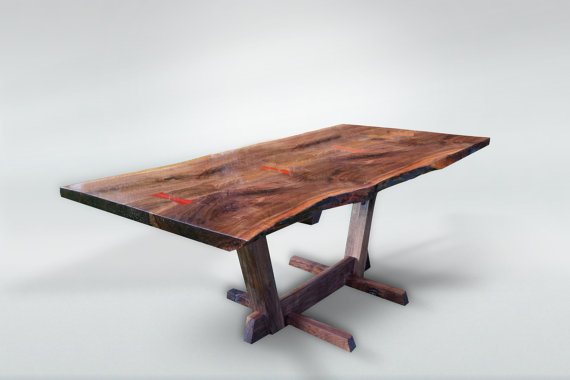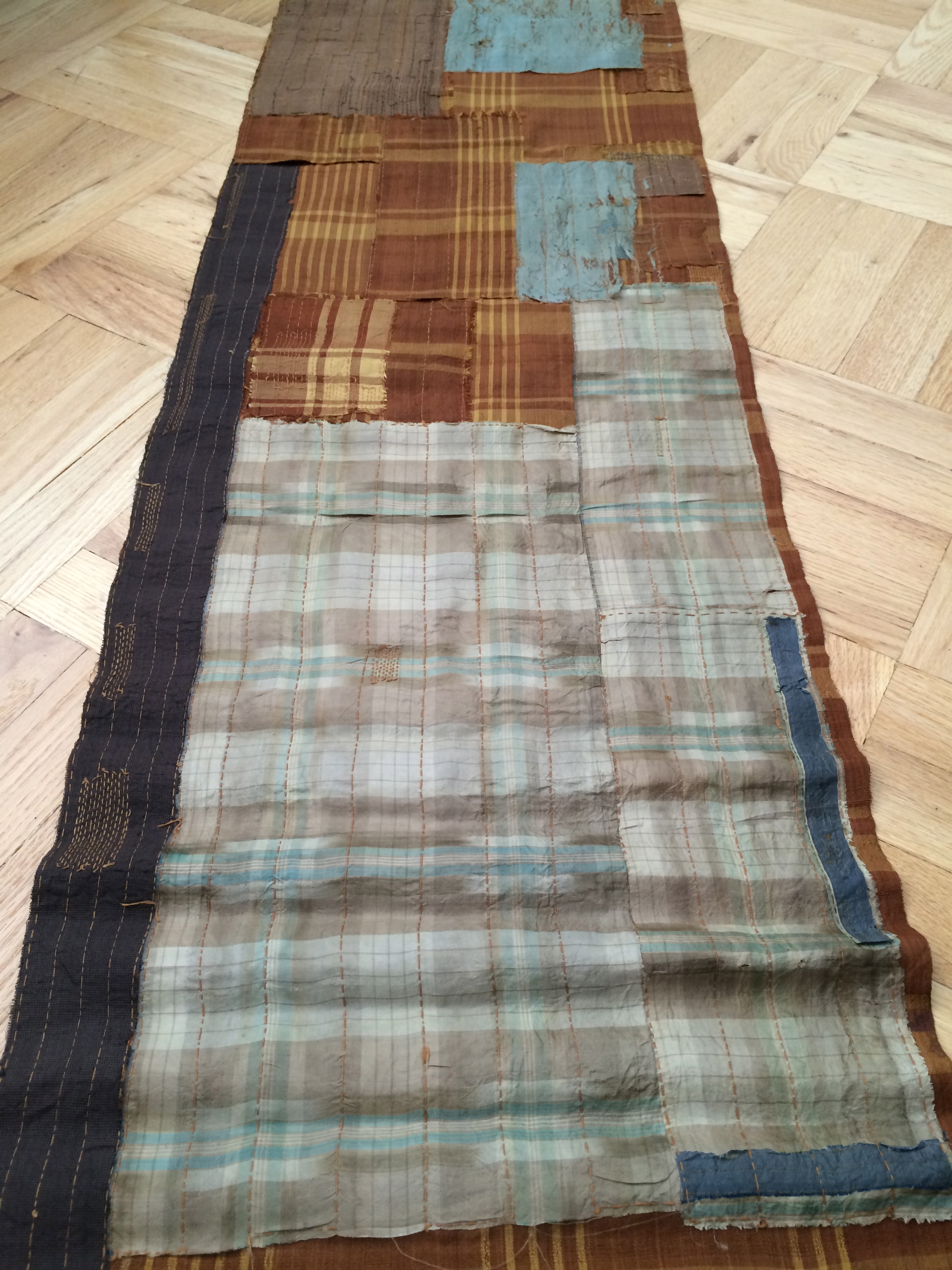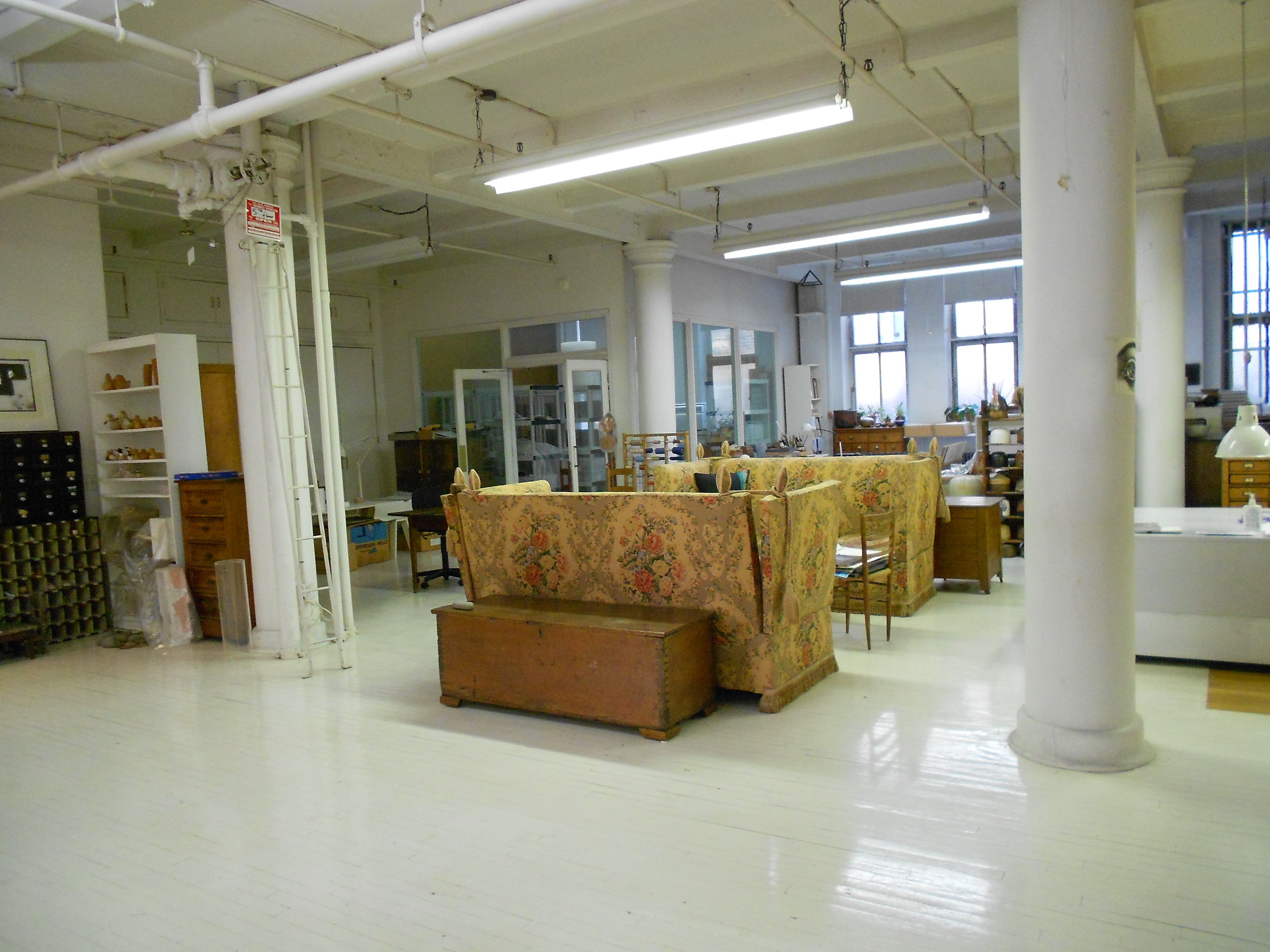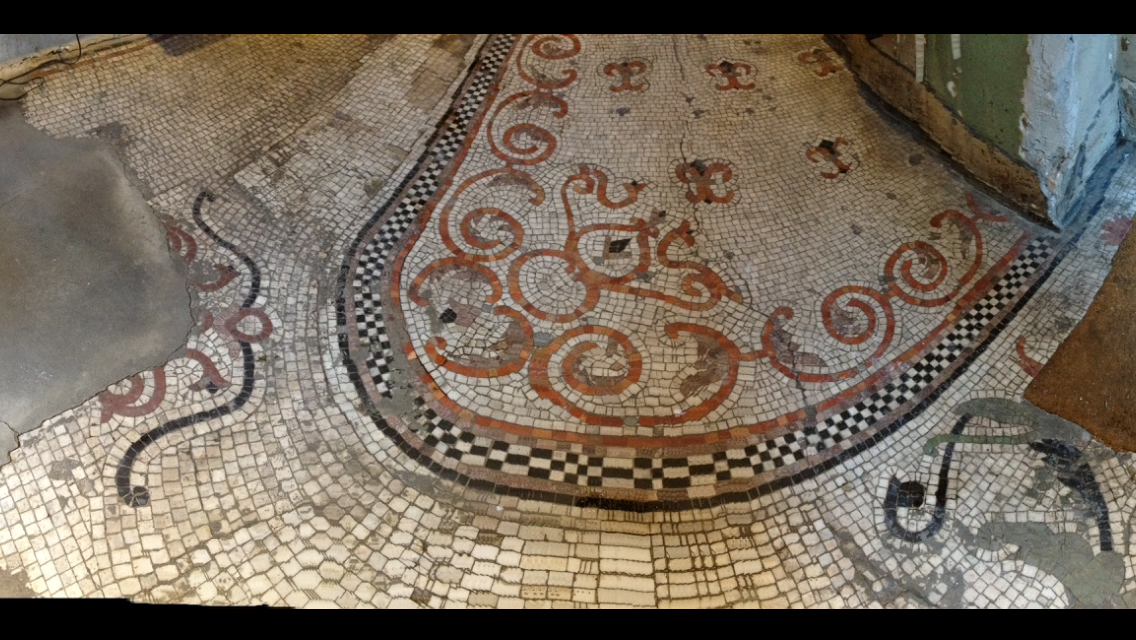
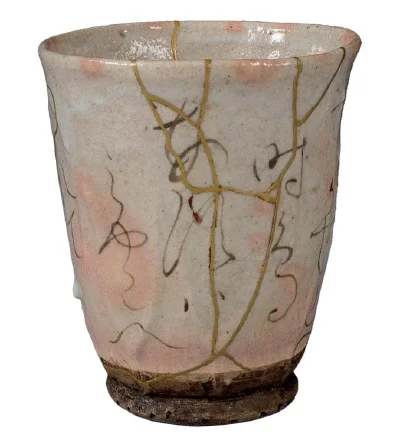
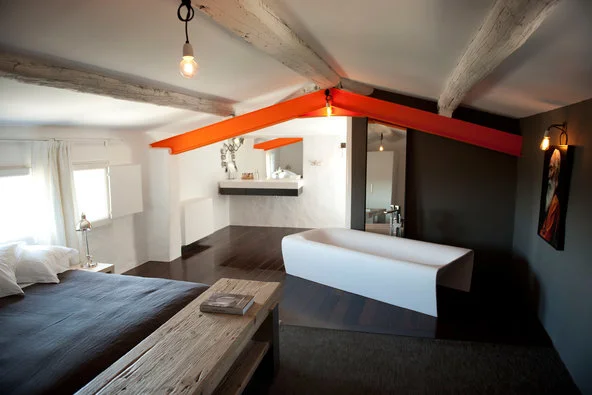
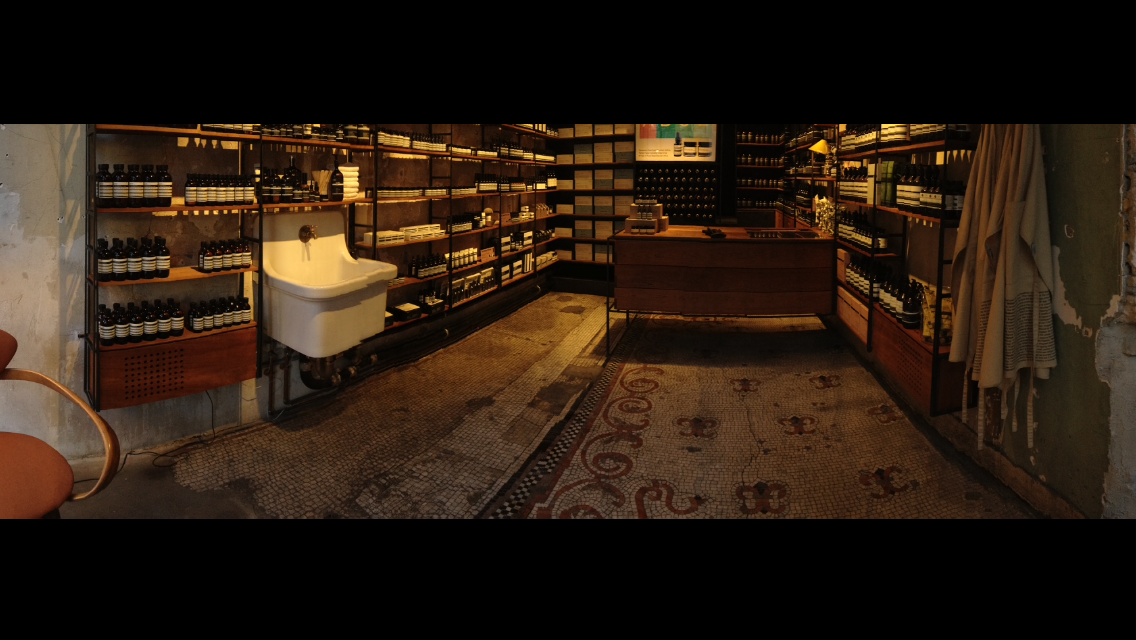

Opening Aesop inlayed floor tile on MadAve
“The design should take advantage of unique characteristics of the site, even its disadvantages.”
~Frederick Olmstead - Landscape Architect Central Park, NYC
Opening Aesop inlayed floor tile on MadAve
“The design should take advantage of unique characteristics of the site, even its disadvantages.”
~Frederick Olmstead - Landscape Architect Central Park, NYC
THE SEED FOR THE SOLUTION
I spent the better part of my life exercising a knee jerk reaction, learned all too well from family to say no. A resounding NO to all that didn’t conform to some half-baked, preconceived notion of what I clung to. But one day, when I cut too much wood off of a piece I was sculpting, it dawned on me, with advice from my father…of all places, that a great solution could be found in any seemingly, lost, messed up, mistaken condition. Thus began my long and arduous process to shake off the “no” shackles. Once I got the hang of it events quickly revealed how I could (but didn’t always – to my detriment) turn things around.
Everyday we face challenges and the choices we make either negate or enhance our direction. The trick is to somehow stand out of our own way, and embrace a more encompassing reality.
I have ever so slowly come to realize that a huge factor for success is “attitude”. Didn't someone say attitude = altitude? How's about latitude? The ability to s-t-r-e-t-c-h-. There’s an added benefit of embracing a lighter attitude; people are drawn to it. People are naturally drawn to the winners - those who can relieve themselves and possibly another of their problems by seeing the seed to the solution.
I don’t think any great salesman has ever shown that he sees a problem. He sells the solution.
Some years ago when I landed in Dakkar, Senegal with a friend, I was singled out and pulled over by the authorities. Immigration told me that my return trip was not valid. Luckily the friend who I was traveling with, a client who I sold my first rug to, happened to know someone who owned a travel agency.
After we contacted and met him, he graciously took the ticket from me and said, “It’s my problem now.” He wanted to relieve me of the burden so I could enjoy his country. And did I ever! I have tried to adapt that attitude for my clients, knowing they are hiring me to relieve them of one less stress. And although sometimes I want to tell them more, I have slowly come to realize the best policy is to say less. Edit.
I can go on about golden nuggets of inspiration but here’s an example that drives home the concept that our vision is just as good as any top designer’s - and possibly even better!
FILL IN THE CRACKS
I ran into an interior design friend on the Metro commuting from New York City. Her clients are the rich and famous who happen to have one of their many homes in New York City...get the picture?
As we were talking she began to bemoan a custom made table that came out 'wrong'. It was one of those beautiful wooden, handmade tables that in their rustic nature show off the beauty of the wood grain. Nakashima was probably the first to explore the wood in this way because, in his own words, he let the wood speak to him. These pieces have since become the ‘it furniture’, fetching astronomical prices.
This designer friend was confiding in me that there was a natural split in the wood that was unforeseen – in other words they did not order this imperfection that they saw as a stain, a blight. Instead of being able to embrace this imperfection it cost the craftsman this job.
The designer returned the table to the artisan, who had to painstakingly make another table. I asked her to reconsider, seeing a “golden” opportunity by literally pouring hot, golden metallic molten into the void and filling this crevice in the furniture.
Or how about a vibrant cadmium/vermillion to highlight the crack and make it a feature to enhance the wood? She didn’t get it – or even what attracted her and her client to this beautiful furniture in the first place –its imperfection.
FROM EYESORE TO EYE CANDY
A year after this conversation I came upon a picture of this type of table I had dreamed of. Into it, the designer intentionally brought a vermillion color to these butterflies in the joints that hold the 2 planks of wood together.

Kin Suri
Kin Suri = Applying Gold
Kin Suri
Kin Suri = Applying Gold
Now the question begs to be asked, am I the genius I think I am? Okay, so I must admit I’m not the genius I make myself out to be. I must be following history and my exposure to it enables me to take in, absorb and appreciate thinking out of the box.
From my subconscious I have sourced these images and concepts. Having lived, worked, studied and absorbed Japanese design and culture for years, as I ate, woke and slept it I buried this solution. That is how I justify making these connections.
One day, as I was preparing to give a tour at the Japan Society in NY, I came across this statement: “The neck of this jar is cracked in several places. The cracks have been filled in with gold lacquer. This is the traditional Japanese way of repairing good ceramics.” They have a name for this, Kin Suri which translates as Applying Gold.
THE PERFECTION OF IMPERFECTION
Historically, the Japanese could not afford to discard. Which is probably why Nakashima worked his tables as he did. Then this very IT look comes along in the US a generation or so later, instinctively understood as right. Our modern, ‘throw away’ culture embraces the gift the Japanese mind has lived with for generations and can offer us.
If we don’t allow ourselves to discard then we reuse and in the reuse we may just find the exquisite solution that shows us beauty in the most unusual places. These pots and textiles exemplify how the gold filled cracks or stitches overlay the original design with a random beauty unique to them.
Recently when discussing the Japanese leaving the basting stitches showing on the kimono with the past head of textile conservation at the MET, she could not get past these stitches being retained even after the garment was fully sewn. I think for a Japanese person, as for myself because I lived in the culture when I was in my twenties, they would not see it as wrong or out of place. You accept this overlay is as part of the overall theme. Your eye does not stop on them but takes the piece in as a whole. The basting becomes part of this symphony.
This stitching becomes the decoration for the garment. The constant repairing of a garment that has become boro boro, literally meaning torn to shreds, has become a very sought after textile for Americans nowadays. Boro boro are collector’s items in the same way we venerate our ripped jeans. And that’s a good thing because it takes 1,800 gallons of water to grow enough cotton to produce just one pair blue jeans!
“Waste not, want not.” Was a familiar expression my mom used while I was growing up. She used to save her scraps of fabric material and I would practice making even stitches along them. The paper towel was dried at the edge of the sink for reuse long before conservation became a catchword. In cultures that have no choice due to limited resources, they find a way to salvage an object.
In the United States, due in large part to our 20th century prosperity and the shortsightedness of the seller to look only to increasing revenue, we've found it so easy to discard, re-consume and dispose again. Now we have our own figurative cracks developing and growing out of this willfully wasteful way of life. What kind of kin suri will we use to fill them?
Eye Candy
EYE CANDY - overcoming an obstruction
Eye Candy
EYE CANDY - overcoming an obstruction
Examples of solutions to problems are everywhere we look. What we might have seen as an insurmountable obstacle becomes our springboard to grasping a solution. There’s always a workable solution, perhaps multiple solutions. We only have to fish for the right one. Whether we’re dealing with a furniture imperfection or an unsightly view, it’s exactly the same. And how exciting when we find a way to overcome it.
When confronted with countless columns in her loft space (we should all have such problems), my weaver friend knew just how to break them up. She painted the one column nobly standing in her entryway gold with an overlaid of a pattern. Who could top that? Maaaybe ancient Egypt?

L’Artemise Hotel
L’Artemise Hotel in Uzès, France
L’Artemise Hotel
L’Artemise Hotel in Uzès, France
This structural quirk that couldn’t be hidden was beautifully worked into the design of the room. So as to keep the full height of the ceiling, L’Artemise Hotel in Uzes, France takes the newly crafted metal beam that was not original to the architecture but is probably a reinforced structure due to a sagging roof or code changes for building reuse. They incorporated it as a highlight of the room instead of an eyesore, just by changing the color from a dull metallic to a hot orange. Doesn’t this color make you want to wake up in that spot on the bed?

Aesop Mad Ave
Aesop Mad Ave
I have the greatest respect for Aēsop, an Aussie shop on Madison Ave, selling imported creams and skin care. They took over a shoe repair shop and instead of making their store spanky new and clean – to match their line, they juxtaposed it all and incorporated the layers they found when peeling away at an old shoe repair (cobbler) shop. They had the audacity to reveal and unveiled splendid discoveries. http://www.aesop.com/au
Aside from uncovering the mosaic floor, customer’s phone numbers were scratched on the wall as a reminder for the shoemaker to remind them of pick up. This is definitely not the shi-shi Madison Ave of today - that bastion of shopping and privilege it has evolved into.
I grew up knowing a mixture of two worlds on Madison Ave. It transitioned from run of the mill location to high end shopping. The little known reason for this transformation is because the uber wealthy men living in their Park Avenue sprawls with their families needed a convenient place, something close by their own digs, to stash their bored mistresses. Just think, these were women who were not entitled to bear their lover’s children, take a husband or have a job. With boatloads of money at their disposal what else could they do but shop. And shop they did. A whole Avenue was created for these ladies of leisure - with the latest brands being displayed in their newest looking shops.
It’s a breath of fresh air to see this about face to Mad Ave of letting the old exist alongside the new. And let-me-tell-you if that street can pull it off, we can too!
Bjarke Ingels
thinking out of the box
Bjarke Ingels
thinking out of the box
Bjarke Ingels finds his inspiration for building a Swiss watch museum by thinking out of the box. La Maison des Foundateurs is a museum that defies our knowledge of what materials could and should do.
He expresses his fascination with how Switzerland became a world leader in watch making, "In the 16th century Jean Calvin introduced a ban on jewelry in Geneva. Out of work, all the jewelers needed something else to do. Since the watch was seen as a functional tool it became a loophole in the ban and suddenly the skill sets of a whole profession migrated towards watch making.
We associate innovation with perseverance — to fight for our ideas and plow through any and all obstacles — when our road is blocked we are forced to find new ways and new ground to walk on. The Swiss watch making miracle is a case study in innovation through adaptation.”
THE WORLD IS YOUR OYSTER
‘The world is your oyster’ was the title of our last assignment for a textile class I took over 30 years ago at Parsons School of Design. I was lost, just being told by my father there was no place for me in his giant corporation, right after he had just invited me in (it was soon to shutter in bankruptcy, marred by years of mismanagement). This “roadblock” lead me to this class assignment which launched my career as a rug designer. It pointed me in another direction, a direction which combined rug making with the daring insights I gained from the Japanese culture.
The lustrous pearl cannot emerge from its shell without bits of sand, grit and dirt moving it forward.



